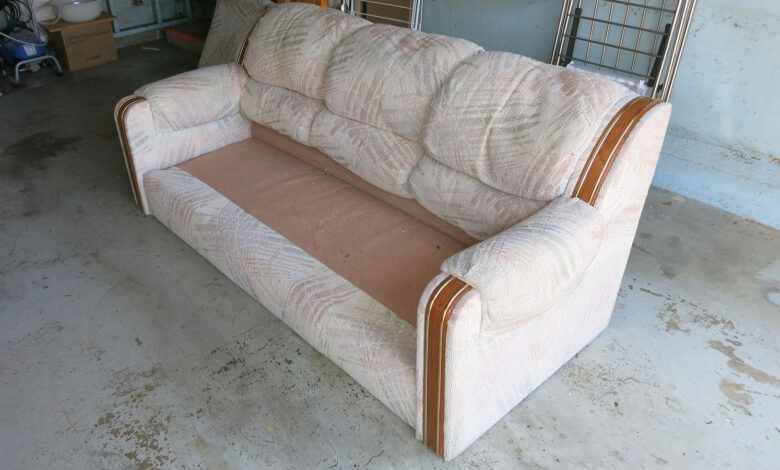Couch Removal: Tips and Strategies for a Stress-Free Experience

When it comes to refreshing your living space or downsizing, one of the most daunting tasks can be removing an old couch. Couches are bulky, heavy, and often seem impossible to maneuver out of your home. However, with the right strategies and a bit of planning, couch removal can be a hassle-free experience. In this comprehensive guide, we’ll walk you through various methods and tips to make couch removal a breeze.
Why Remove Your Couch?
Before we delve into the specifics of couch removal, it’s essential to understand why you might need to part ways with your beloved piece of furniture. Here are some common reasons:
1. Upgrade or Replacement
Over time, your lifestyle and preferences may change. You might find yourself in need of a more comfortable or stylish couch to enhance your living space. Upgrading or replacing your old couch can breathe new life into your home’s interior design.
2. Downsizing or Moving
When you’re moving to a new home, particularly if it’s smaller or in a different location, your existing couch might not fit or complement the new space. In such cases, removing your old couch becomes a necessity.
3. Wear and Tear
Couches, like any other piece of furniture, experience wear and tear over the years. If your couch is sagging, torn, or no longer providing the comfort it once did, it might be time to bid it farewell.
4. Space Optimization
Reorganizing your living space to optimize comfort and functionality is another reason to consider couch removal. Removing a couch can create room for other furniture or activities, like setting up a home office or creating a play area for kids.
Now that you understand why you might need to remove your couch, let’s explore the different methods and tips for a seamless removal process.
DIY Couch Removal
1. Measure Your Couch
Before you begin, measure the dimensions of your couch, including height, width, and depth. This information will help you determine if the couch can fit through doorways, hallways, and staircases. If it doesn’t fit, you may need to disassemble it, which we’ll discuss later.
2. Gather Necessary Tools
For a DIY couch removal, you’ll need some essential tools such as:
- Screwdrivers
- Wrenches
- Utility knife
- Moving blankets
- Ropes or straps
- Dollies or sliders
- Work gloves
Having these tools ready will make the process more efficient and safe.
3. Enlist Help
Couches can be heavy and awkward to carry, so it’s advisable to enlist the help of a friend or family member. Having an extra set of hands not only makes the task easier but also reduces the risk of injury.
4. Protect Your Home
Before you start moving the couch, take steps to protect your floors and walls. Lay down moving blankets or cardboard on the floor to prevent scratches and scuffs. Remove any obstacles in the path of the couch to ensure a clear route.
5. Tilt and Slide
Tilt the couch onto one end and slide moving blankets or sliders underneath. This will allow you to slide the couch more easily, reducing the risk of straining your back or damaging the floor. Slowly and carefully, slide the couch to its destination.
6. Disassemble if Necessary
If your couch doesn’t fit through doorways or tight spaces, consider disassembling it. Remove the legs, backrest, or any detachable parts using your tools. Be sure to keep track of the screws and components for reassembly later.
7. Secure for Transport
Once the couch is outside, secure it to a dolly or use ropes and straps to keep it stable during transportation. This step is crucial, especially if you’re moving the couch in a vehicle.
8. Dispose of Your Couch
Finally, decide how you want to dispose of your old couch. You can:
- Donate: If the couch is in good condition, consider donating it to a local charity or organization.
- Sell: If your couch still has value, you can sell it online or through a yard sale.
- Recycle: Some parts of your couch may be recyclable, such as the frame or metal components.
- Trash: As a last resort, you can arrange for a bulk trash pickup or take it to a disposal facility.
Professional Couch Removal Services
While DIY removal is an option, professional couch removal services can save you time, effort, and potential headaches. Here’s what you need to know about hiring professionals:
1. Research and Choose a Reputable Service
Start by researching local couch removal services. Look for companies with good reviews and a history of reliable service. You can also ask for recommendations from friends, family, or neighbors who have used such services in the past.
2. Get Quotes
Contact several removal companies to get quotes. Be prepared to provide details about your couch, including its size and weight, as this will help them give you an accurate estimate.
3. Check Insurance and Licensing
Ensure that the removal company is licensed, insured, and bonded. This protects you in case of any accidents or damage during the removal process.
4. Schedule a Pickup
Once you’ve chosen a removal service, schedule a pickup time that works for you. They will typically arrive with a team of professionals and the necessary equipment to safely remove your couch.
5. Dispose Responsibly
Reputable removal companies often have responsible disposal methods in place. They may donate usable furniture to charities or recycle materials when possible, reducing the environmental impact of couch disposal.
6. Be Present During Pickup
It’s a good idea to be present during the pickup to ensure the right couch is removed and to address any questions or concerns.
Donation and Recycling Options
If your couch is still in decent condition, consider the following options:
1. Donate Your Couch
Donating your couch to a local charity or non-profit organization is a great way to give it a second life. Many organizations accept furniture donations and will often pick up the couch from your home. Check with local shelters, thrift stores, or online platforms like Freecycle or Craigslist to find suitable recipients.
2. Sell or Give Away
If your couch is in good shape, you can try selling it online through platforms like Craigslist, Facebook Marketplace, or even eBay. Alternatively, you can give it away for free to someone in need.
3. Recycle
Couches often contain various materials, including wood, metal, and upholstery. Contact your local recycling center to inquire about couch recycling options. They may be able to separate and recycle different components, reducing the environmental impact of disposal.
Final Thoughts
Couch removal may seem like a daunting task, but with the right approach and resources, it can be a manageable process. Whether you choose to tackle it yourself, hire professionals, or explore donation and recycling options, remember to prioritize safety, protect your home, and dispose of your couch responsibly. By doing so, you’ll not only free up valuable space but also contribute to a more sustainable and clutter-free environment. So, bid your old couch farewell with confidence, and welcome the possibilities of a refreshed living space.



